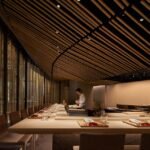[ad_1]
For a long time, the French classics – from the elaborate confit de canard (duck confit) to the humble crêpe – were relentlessly mimicked by chefs the world over. Gallic techniques, sauces and other preparations were the cornerstones of a respectable culinary education and a fantastic dinner out. But recently, things have changed.
Peek into the kitchens of Paris’ most coveted restaurants and you’ll observe the greatest testament to the city’s food philosophy today: diversity. On all levels of the kitchen hierarchy are chefs hailing not only from around the world, but also from vastly different culinary traditions. Indeed, what defines Paris’ current culinary style is a bricolage of flavours, an emphasis on inventive techniques and a creative voice that is wholly unique to each chef.
It took a couple of decades for this to happen. Tastes evolved in the early ’90s through the mid-2000s, as the buttoned-up dining experiences that once earned Paris its premier gastronomic reputation were no longer resonating. Much of the food that was being churned out was either cheap and mediocre, or expensive and elitist. By then, cities like Tokyo, Copenhagen, London and San Francisco had caught up and flexed their creativity, earning the accolades once reserved for Paris. Something had to be done.
Change soon came in the form of bistronomy. First observed in Paris’ restaurants, this culinary movement blends gastronomic techniques with affordable ingredients, unfettered dining rooms and laid-back service. The pressed tablecloths and fine china that once went hand-in-hand with dining were supplanted by rough-hewn wood tables, simple ceramic plates and servers donning linen aprons and Stan Smiths.
With the doors to change wide open and the dining population more curious, Parisians increasingly patronised the city’s global food offerings – think Middle Eastern doner kebabs, Ethiopian injera (flatbread) spreads and the piquant offerings of Vietnamese diners – of its diverse immigrant population. Other untapped dining genres also began to emerge, from street-food stalls and fast-casual canteens to eateries helmed by chefs with roots in other cultures.
While some of these chefs stay true to the spirit of traditional French cuisine, many others are putting a different spin on established recipes, incorporating aspects of their own culinary heritage or drawing from their experiences cooking in kitchens all over the world.
If there’s a traveller’s obligation to do anything in Paris today, it’s to taste the panoply of flavours that characterises the local cuisine – now more borderless and dynamic than ever.
Mokonuts: Middle Eastern-inspired eats
At first glance, it’s easy to think that worlds and traditions separate Omar Koreitem and Moko Hirayama, the husband-and-wife duo behind this popular lunch destination in the 11th arrondissement. Koreitem was born in Beirut and grew up in Paris, while Hirayama was born in Tokyo and grew up in San Francisco; both went to university in New York. Nothing about their backgrounds would immediately suggest that they would end up running a restaurant in Paris.
Hirayama’s round-the-clock job in a law firm eventually brought the duo to London, where the gruelling hours led them to question their life plan. “He dreamt of cooking and I found comfort in baking – usually American-style cookies and sweet loaves, like my mother used to make while I was growing up in the United States,” explains high-energy Hirayama.
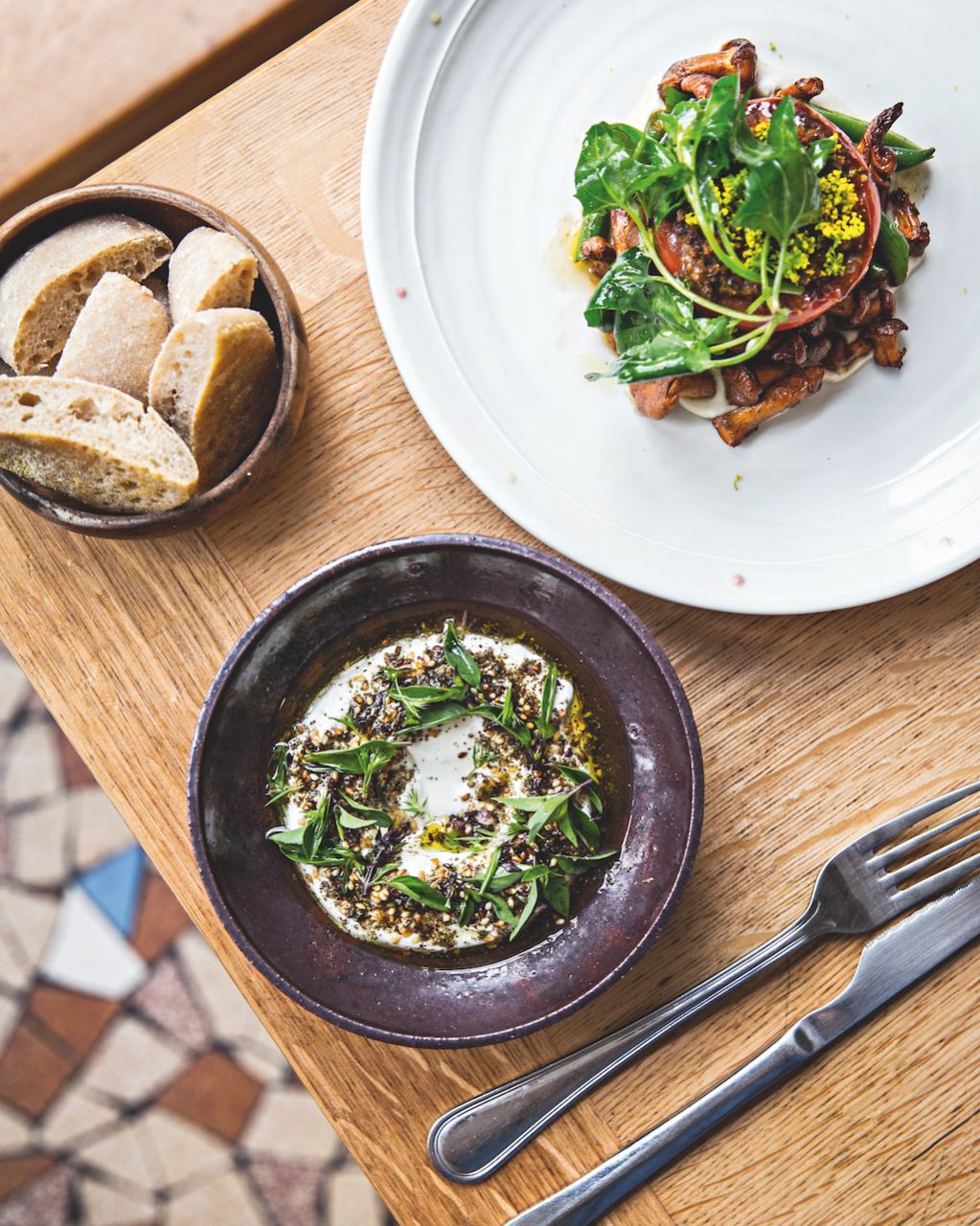
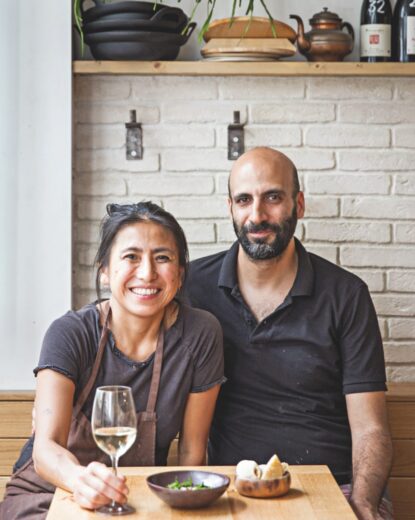
The soft-spoken Koreitem rose through the ranks in Michelin-starred kitchens like Daniel in New York, while, upon their relocation to Paris, Hirayama honed her dessert technique at restaurants such as Blé Sucré, Senderens and, later, Yam’Tcha. When the opportunity presented itself to open a restaurant that celebrated their atypical trajectories and tastes, the pair quickly jumped at the chance.
Mokonuts is a space for culinary freedom, but with the warmth you’d expect from your favourite local. It is French insofar as the menu rotates daily and showcases fresh produce from local purveyors. However, the flavours put a predominantly Middle Eastern spin on French ingredients such as endives, chanterelle mushrooms and guinea fowl.
Koreitem, who is responsible for the savoury offerings, makes generous use of herbs and spices like za’atar and sumac (often to spruce up a bowl of labneh) and dreams up dishes like roasted kabocha (Japanese pumpkin) with tahini. Meanwhile, Hirayama provides the devastatingly delicious desserts – from kumquat and buckwheat cookies to a cheesecake topped with juicy pomegranate seeds – which have earned her a cult following in the city.
Robert: The freshest pasta
Peter Orr is finally home. At the age of 18, he left Adelaide in his native Australia to travel and cook. He spent many of those formative years in London, cutting his teeth at restaurants such as Locanda Locatelli, Rhodes Twenty Four, Nahm and the Hand and Flowers – the first gastropub to earn two Michelin stars.
But it was in Paris that the tattooed Aussie chef found his voice. Like many foreign chefs, it was a 2014 gig at Au Passage that launched his career and gave him the chance to experiment with French ingredients without rules or limits. This was followed by a stint at Bar Martin, a high-energy wine bar owned by Loïc Martin (Orr’s current business partner).
When Orr left Bar Martin at the end of 2016, it was to launch a more sophisticated – but still accessible – restaurant of his own. “So much of dining these days focuses on small plates. I wanted to bring back the entrée-plat-dessert menu,” he explains, acknowledging that locals still take great pleasure in that classic structure.
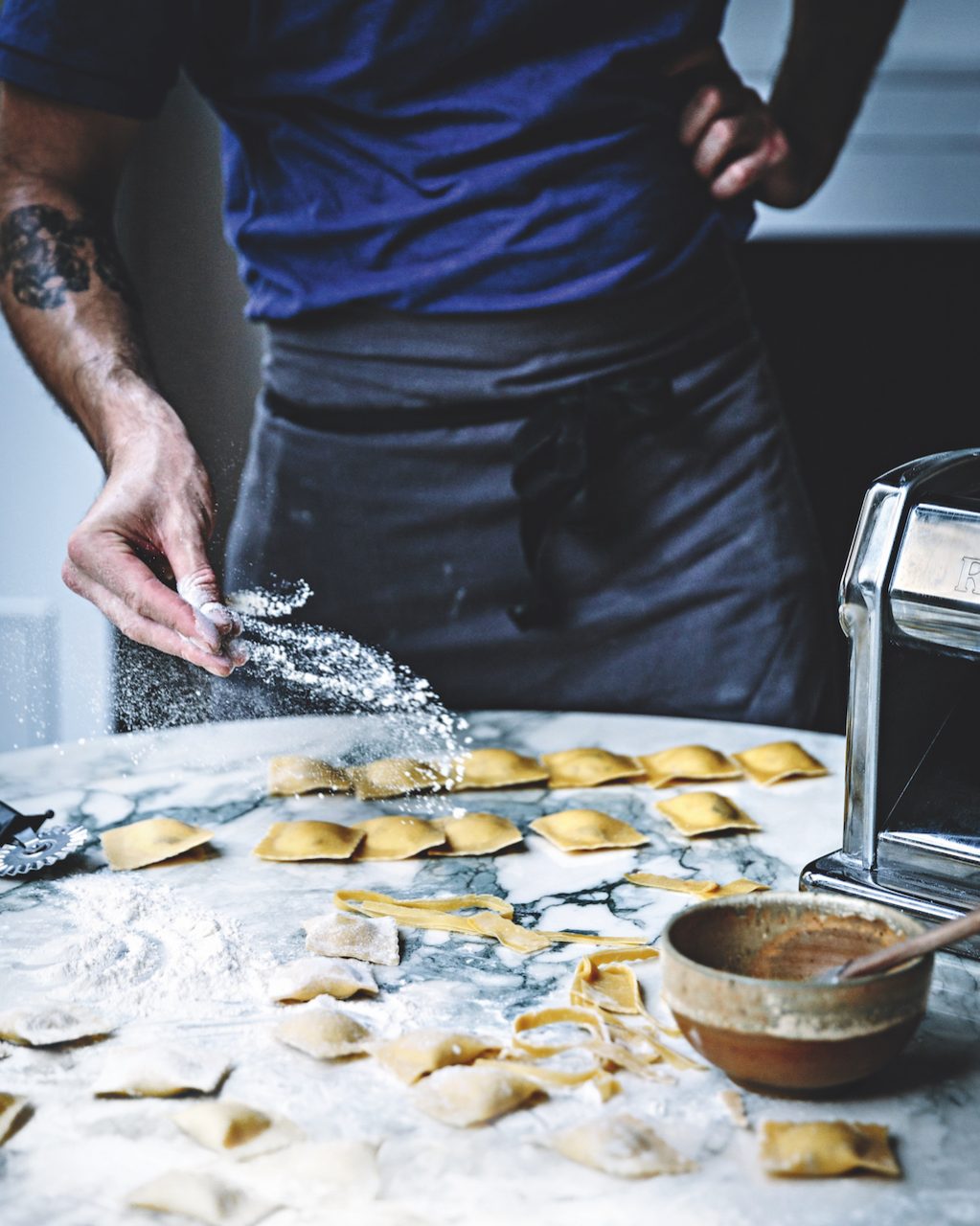
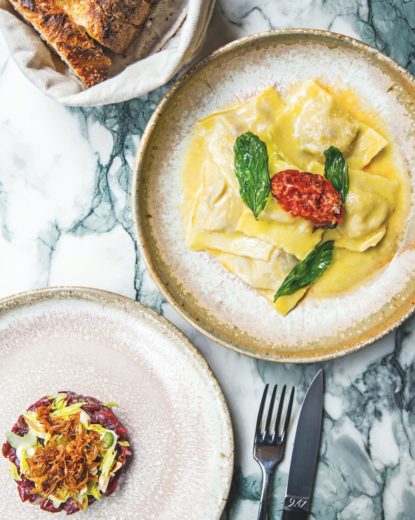
This doesn’t mean that the menu at Robert, in the 11th arrondissement, is entirely French, though. From his sleek open kitchen – which overlooks a bright, 43-seater dining room filled with custom wood tables – Orr prepares at least one type of fresh pasta daily (a nod to his days at Locanda Locatelli) and works with homemade ricotta, nori and chutneys.
Even with typically Gallic dishes like terrine de lapin et cochon (pork and rabbit terrine) and beef tartare, he draws inspiration from spices and pickled vegetables that he was exposed to in Australia, while incorporating subtle nods to his time in England (think a side of perfectly golden crisps).
“Ultimately, the form and the base are French… that’s the terminology we use in the kitchen,” Orr says. “But I like to bring some unexpected tweaks to dishes people love to eat.”
Itacoa: No-nonsense seasonal fare
Don’t ask Rafael Gomes to define his cooking. The tall, lithe chef grew up in Rio de Janeiro, but moved to New York to train at the prestigious Institute of Culinary Education. After graduating in 2007, he apprenticed at Gramercy Tavern before working his way up at Eleven Madison Park.
“The technique and rigour we learned on the job were very French, but even there the cuisine itself can’t be so easily categorised,” he reflects. This continued to hold true even when he moved to Paris in 2015 to head the kitchen at brasserie Grandcoeur. There, he created a menu that was generous but light, vegetable-forward but without the florid touches (“No tweezer-applied flowers!” he quips).
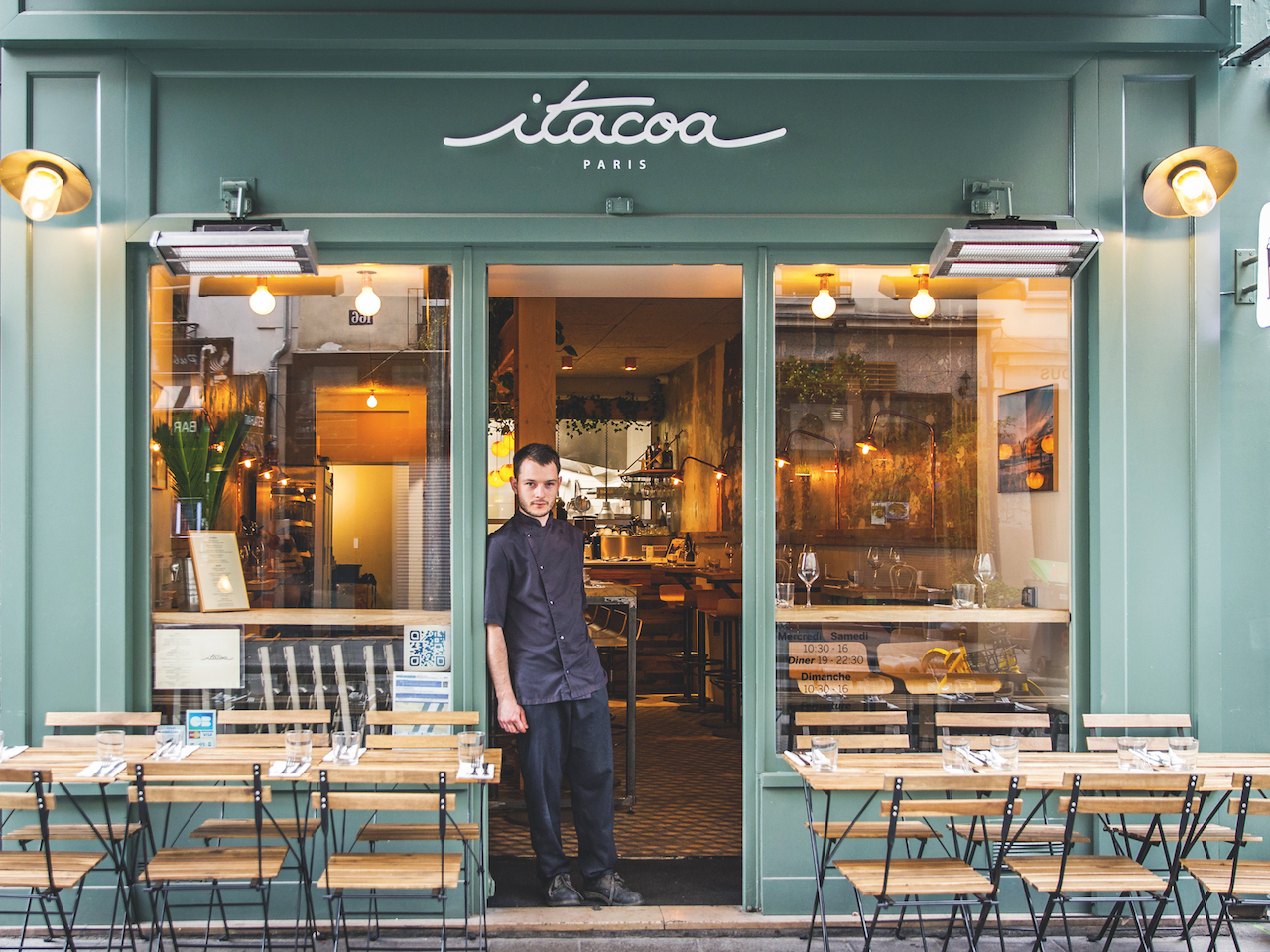
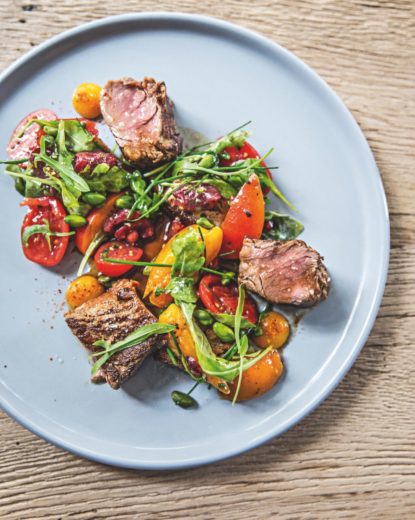
What he can say, even at his new restaurant Itacoa – a casual café in the second arrondissement – is that his cooking is all about balance: hot and cold, creamy and crunchy, savoury and sweet – a departure from the rich flavours of traditional Gallic cooking.
Though he chiefly focuses on local and seasonal produce – such as spring asparagus and veal, to name a recent dish – he also draws inspiration from further afield. His to-die-for pão de queijo, or Brazilian cheese bread, is a menu mainstay, while his passion fruit and white chocolate crémeux has become a signature dish for good reason: it smacks of an indulgent, sun-kissed jaunt on a beach in Brazil.
Indeed, while Gomes’ culinary style may escape codification, he ultimately brings together the myriad flavours he personally loves, but were rarely offered in Paris kitchens before he joined the fray.
– PHOTOGRAPHY BY JOANN PAI
Please check the establishments’ respective websites for opening hours as well as booking and seating requirements before visiting, and remember to adhere to safe-distancing measures while out and about.
To learn more about Singapore Airlines flights, visit singaporeair.com. For updates and travel advisories, please visit Ministry of Foreign Affairs’ website.
This article was originally published in the September 2018 issue of SilverKris magazine.
[ad_2]









